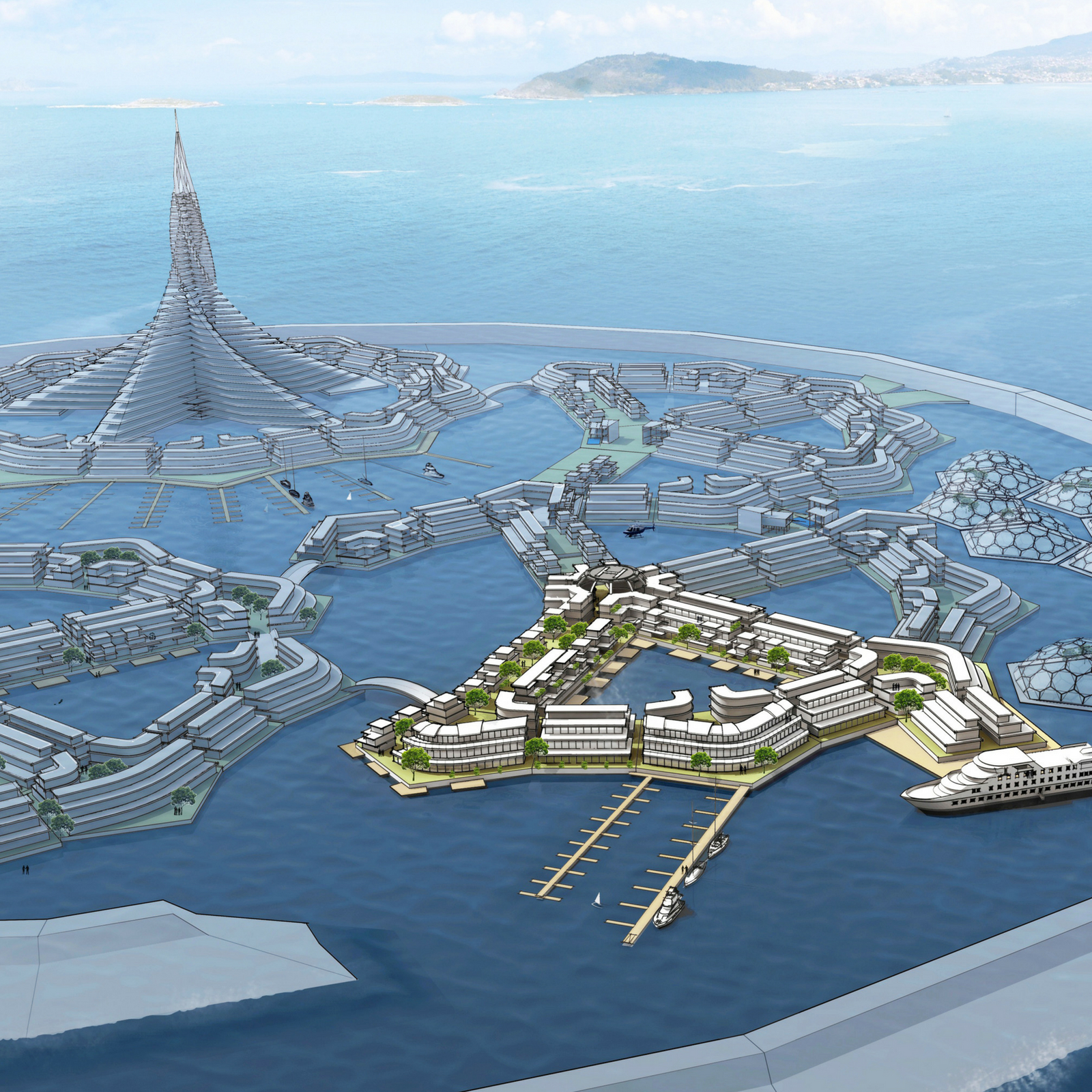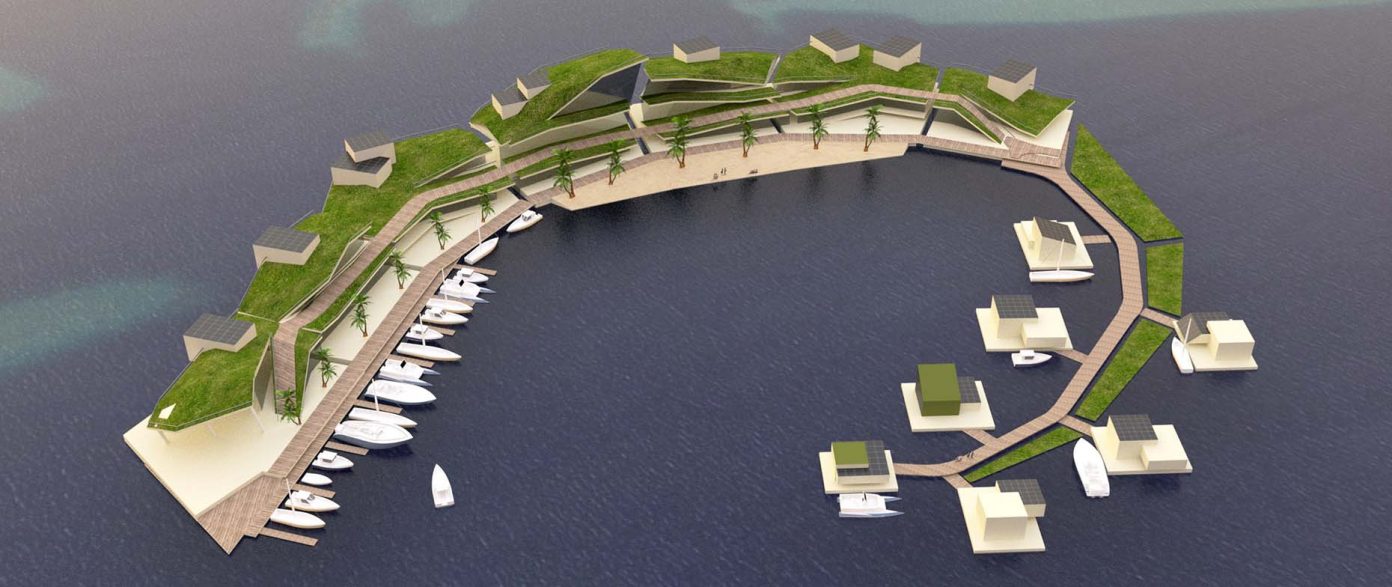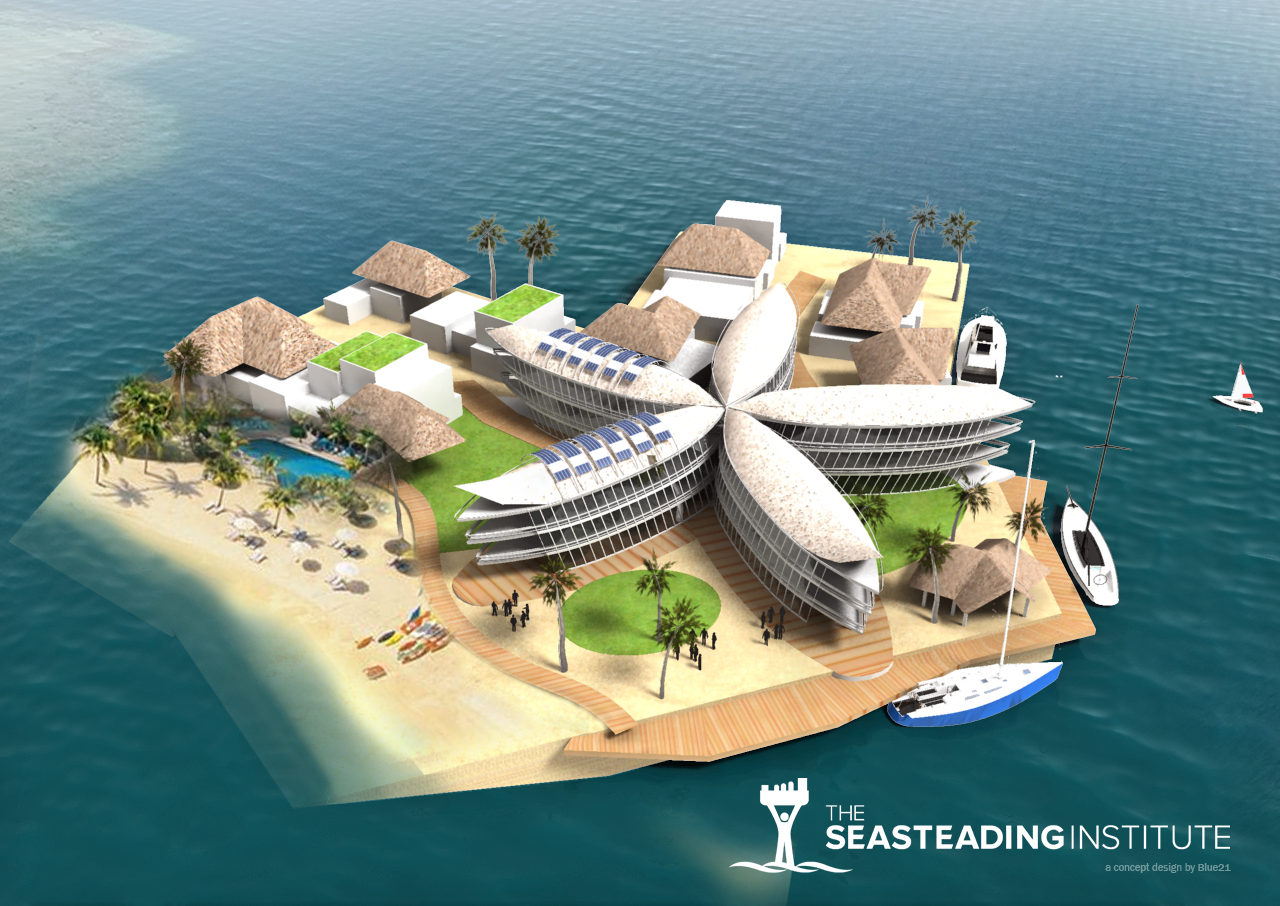
Blue Frontiers has signed a much-publicized memorandum of understanding with French Polynesia. The Floating Island Project is exactly as it reads, only it’s to be an independent government complete with its own cryptocurrency. An idea long thought to be a crazy dream of libertarians is now incredibly close to realization.
Also read: Alec Baldwin’s Lambo Movie Backed by Crypto Tech
Crypto Floating Island Project Nearer to a Reality
“A core structural feature of current models of government is centralization,” begins the pitch for an initial coin offering (ICO) pre-sale of Varyon from Blue Frontiers. “Too much centralized authority leads to inefficient bureaucracies and representatives disconnected from the people they are meant to serve. Given a suitable technological solution, governments are ripe for decentralization. That technological solution is seasteading.”
The book Seasteading: How Floating Nations Will Restore the Environment, Enrich the Poor, Cure the Sick, and Liberate Humanity from Politicians (Free Press, 2017) caused an immediate media sensation. Written by Joe Quirk and Patri Friedman, it’s the nonfiction account of what seems at the outset to be a sci-fi idea. Dutifully, legacy outlets treated it that way, at times dismissing seasteading as impractical, the stuff of fantasy.

“Varyon (VAR),” via the Ethereum chain (1 ETH = 14,750 VAR), ERC-20 token, “is a general purpose payment token for the exchange of goods and services in the Blue Frontiers ecosystem, other ecosystems, and between token holders. Blue Frontiers is planning to use the proceeds of the sale to expand its ecosystem and create Seazones and seasteads, and will only accept Varyon (VAR) for its products and services,” Blue Frontiers claims.
A completely unrelated business proposition put seasteading into perspective. Anglo-Dutch oil and gas concern Shell launched its quarter-century at sea project, Prelude. Assembled in Samsung’s Heavy Industries Geoje shipyard, South Korea, Prelude is Shell’s gamble at taking a refinery to natural gas deposits previously imagined out of reach. Longer than the Empire State Building is tall, Prelude’s hull is among the largest ever built. The enormous project is an inspiring construct, stretching four continents and thousands of people.

No Longer Just a Dream
Prelude is a floating city, and not in the literary license sense. It doesn’t take long to sympathize with Mr. Quirk’s and Mr. Friedman’s vision, even if it’s covered in petroleum-seeking profits at the moment. A floating island, then, isn’t the wacky concept one might be forgiven for at first highly doubting. Combine that real-world use case with modern cruise ships, perhaps linking them together, and it also isn’t terribly hard to consider a country at sea.
That’s the idea. Members of the Seasteading Institute, which can count among its members luminaries such as Peter Thiel, created a company bent on making all that theory turn real, Blue Frontiers. Early last year, in fact, the group inked a deal with French Polynesia to effectively use wet territory under its dominion in an attempt to bring to life the Floating Island Project.

“Blue Frontiers plans to prototype the first seastead with funds raised from the Varyon (VAR) Crowdsale, and to fund additional seasteads through sales,” the project continues. “The Varyon (VAR) Blue Frontiers holds for seastead and Seazone Construction, Development, and Administration will be used only as needed, in order to create seasteads and Seazones and to strengthen the ecosystem of products and services available to Varyon (VAR) holders.”
The distribution of VAR follows pretty standard ICO procedures: “The amount of Varyon (VAR) allotted to seastead/Seazone Construction, Development, Administration is inversely correlated with the amount purchased in the public sale. That is, the more Varyon (VAR) sold in the public sale, the less Varyon (VAR) held for seastead/Seazone Construction, Development, Administration,” Blue Frontiers details. Thus, up to 28% is available during public sale; up to 8% presale; up to 6% for seed funders; up to 15% for the team; and the remainder goes to the project itself, up to 72%.”
“Seasteading brings decentralization beyond the digital world of bits and into the world of atoms by providing modular, floating structures – seasteads – on which the evolution of new societies and forms of governance can occur,” Blue Frontiers asserts. “Promising solutions can branch off at any time by physically separating to create new seasteads – enabling a high level of evolvability and quick rate of adaptation. Mimicking nature’s time-tested method of variation and selection, the process of decentralizing governance through seasteading will spark the creation and evolution of new advancements in civilization.”
Did you think projects like seasteading will eventually get off the ground? Let us know what you think of this subject in the comments below.
Images via Pixabay, Seasteading Institute, Blue Frontiers
The post Crypto Floating Island Project Closer to Realization appeared first on Bitcoin News.
Powered by WPeMatico
